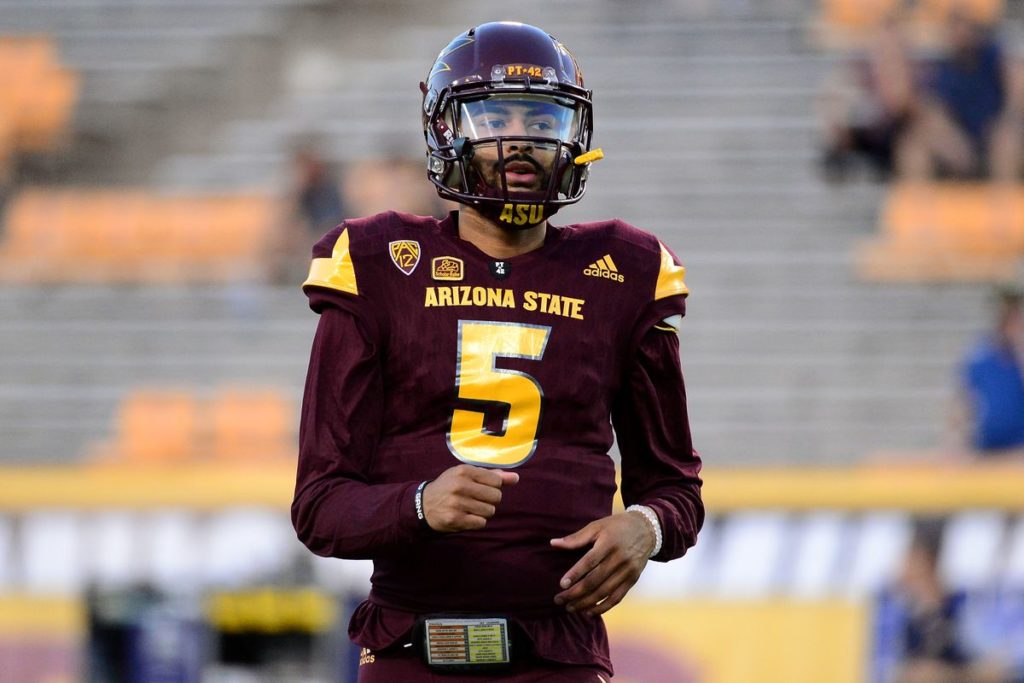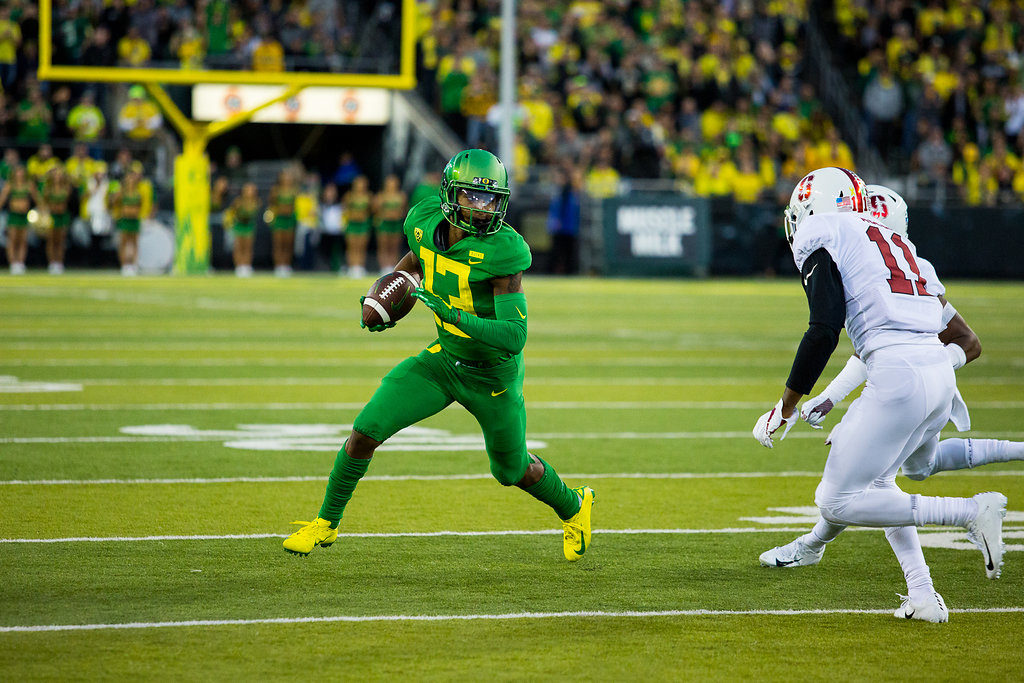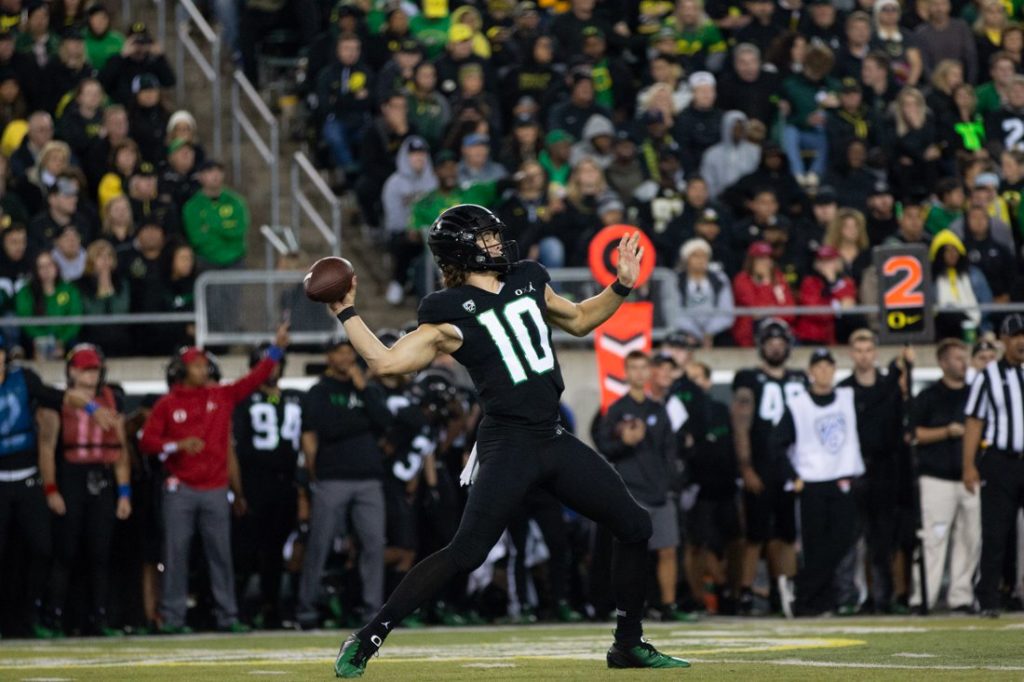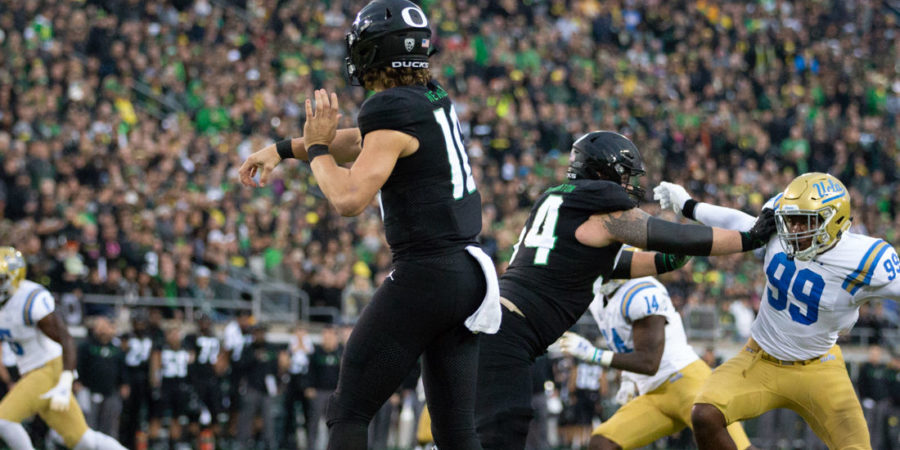By any measure, the second half of the season has not gone according to plan for Oregon. Yet, Saturday night’s game versus Arizona State is the perfect opportunity for the Ducks to exorcise some demons that have taken hold over the past month.
The fact it’s the final home game of the season adds a little more spice to the occasion, but by itself, the game is representative of a chance for Oregon’s coaches and players to change the narrative for this season and beyond. A win over one of the conference’s hottest teams of late would go a long way towards achieving that end.
Below, WFOD examines this week’s keys to victory for the Ducks.

1. Contain ASU’s weapons on offense
If it were only that simple. It’s no secret that the Oregon defense has been much maligned this season, but it has come as a surprise, as many believed – based on last season’s incredible turnaround – that the Ducks’ defense would be a bonafide strength of this team. That simply has not been the case. In year two under defensive coordinator Jim Leavitt, the Ducks are at best an average defense compared to the rest of the country. Though they’ve played much worse than that essentially since the start of conference play.
The challenge doesn’t get any easier Saturday night with Manny Wilkins, Eno Benjamin, and N’Keal Harry coming to town with visions of extending their three-game winning to streak to four in their pursuit of a Pac-12 title game berth. Though the ASU offense as a whole has been just shy of prolific this season, their three-headed offensive monster has been outstanding for much of the year. Benjamin and Harry, in particular, have posted all-conference caliber seasons. In his first year as the starting running back, Benjamin has perhaps made the biggest splash of any player in the conference this season as he leads the Pac-12 in both rushing yards (1,295) and rushing touchdowns (12). Meanwhile, the book has been out on Harry for about three years now, as the Chandler (Ariz.) native ranks second in the conference in receiving yards (928) and receiving touchdowns (9). At 6-foot-4 and 213 pounds, Harry towers over Oregon cornerbacks Thomas Graham and Deommodore Lenoir, who each measure 5-foot-11. The Ducks have been susceptible to both the run and the pass this season and given the matchup issues players like Benjamin and Harry present in this game, this could prove to be the Oregon defense’s toughest task yet.

2. Find a way to get the offense consistently moving on first and second down
When the Oregon offense was successful during the first half of the season, it was because they were successful on first and second down. Thus, it should come as no surprise that over the past several weeks the Ducks have seen their offense falter in spectacular fashion as they’ve failed to generate any sort of momentum early in possessions particularly at the start of games. Beyond Justin Herbert and Dillon Mitchell, the Ducks are inexperienced and generally devoid of playmaking talent at their skilled positions, which has also seemingly caught up to Oregon over the past month.
Exactly how bad have the Ducks been on first and second down? Through 10 games, the Ducks rank 119th out of 130 FBS teams when it comes to gaining a first down on first or second down, converting only 61.7 percent of the time. The good news for Oregon is that the Arizona State defense has been among the nation’s worst units in surrendering first downs on first and second down, allowing opponents to move the chains at a 71.7 percent clip. Make no bones about it, this has been an area of major struggle for the Ducks all season, but if they can manage to work themselves into an early rhythm, it could open up everything else for this offense.

3. Take advantage of big play opportunities
Big plays haven’t quite been the calling card they were for the Ducks during the Chip Kelly and Mark Helfrich eras, but Oregon has been sneaky good connecting on plays of 20 yards or more this season. Much of that has to do with the terrific connection between Herbert and Mitchell, who have been far and away the two biggest bright spots for Oregon on offense this season. For the year, the Ducks rank 19th nationally in big play rate (defined as plays that gain 20 yards or more) at 9.6 percent. Conversely, the Arizona State defense has been below average in that category in 2018, ranking 75th nationally (7.6) in big play rate. With Oregon demonstrating an inability to piece together consistent scoring drives this season, taking advantage of big play opportunities feels paramount if the Ducks hope to find themselves on the winning side of the scoreboard Saturday.

